Electric Service Companies (ESCOs) Market Size
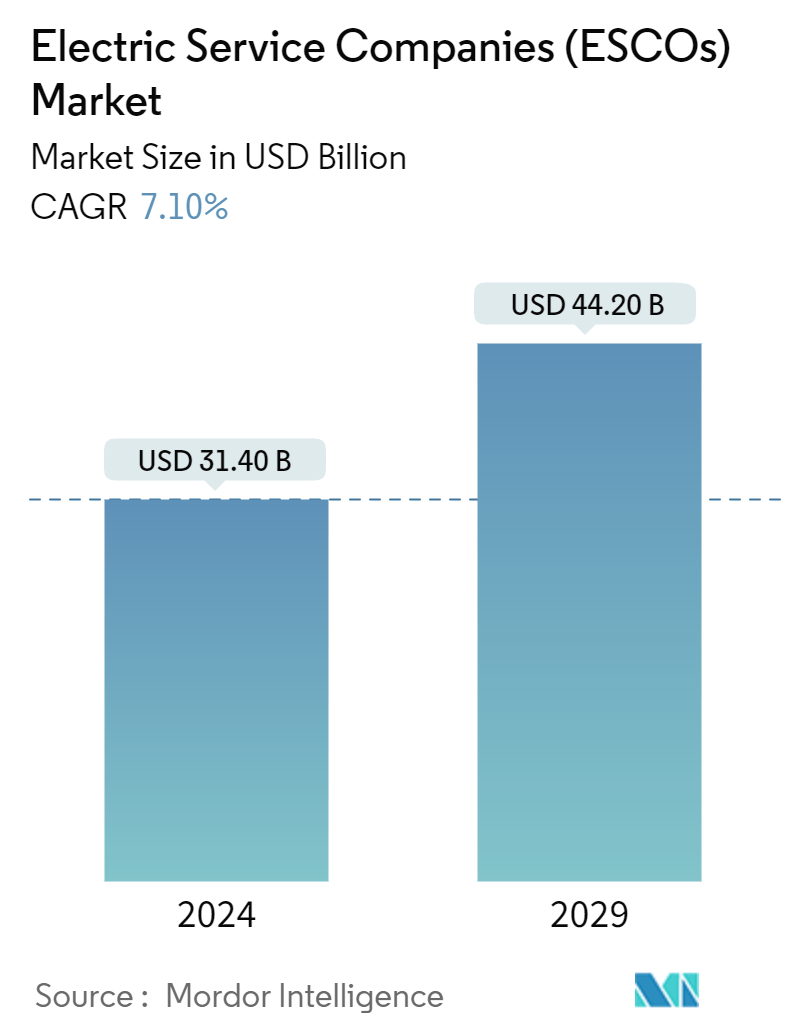
| Study Period | 2019 - 2029 |
| Market Size (2024) | USD 31.40 Billion |
| Market Size (2029) | USD 44.20 Billion |
| CAGR (2024 - 2029) | 7.10 % |
| Fastest Growing Market | Asia Pacific |
| Largest Market | North America |
Major Players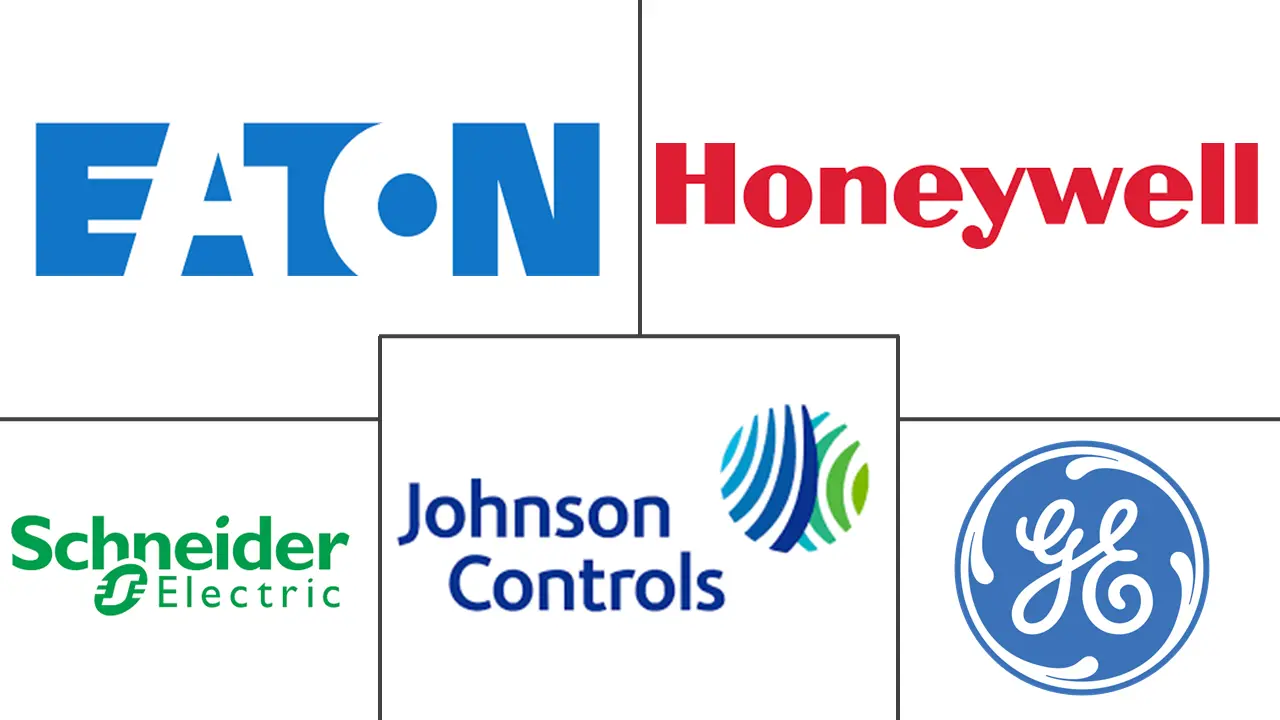
*Disclaimer: Major Players sorted in no particular order |
Electric Service Companies (ESCOs) Market Analysis
The Electric Service Companies Market size is estimated at USD 31.40 billion in 2024, and is expected to reach USD 44.20 billion by 2029, growing at a CAGR of 7.10% during the forecast period (2024-2029).
- Electric Service Companies (ECSOs) specialize in delivering crucial operational, maintenance, and delivery services within the energy sector. ESCOs prioritize energy conservation by fine-tuning energy usage to align with an organization's consumption patterns. They can be set up to back a range of projects, from area revitalization and large residential complexes to commercial ventures such as offices, manufacturing facilities, hospitals, and multi-unit complexes featuring both offices and retail stores.
- One of the primary advantages of electric service companies is their ability to provide a consistent and reliable supply of electricity. This reliability is essential for both residential and commercial customers, ensuring that appliances, machinery, and critical systems operate without interruption. Electric service companies invest heavily in infrastructure, like transmission lines, power plants, and distribution networks, to maintain a steady flow of electricity, even during peak demand times or adverse weather conditions.
- Electric service companies are pivotal in weaving renewable energy into the grid as the world pivots towards sustainability. They seamlessly connect solar panels and wind turbines to the current infrastructure, optimizing the use of these green energy sources. Many of these companies are also channeling investments into research and development, particularly in energy storage technologies. Such advancements are crucial for harmonizing supply and demand in a grid increasingly dependent on intermittent renewable sources.
- The increasing demand for electricity is anticipated to offer lucrative opportunities for the growth of the market studied. According to Exxon Mobil, worldwide electricity demand amounted to over 22 petawatt hours in 2017. By 2040, electricity demand is expected to reach approximately 35.3 petawatt hours globally. Moreover, according to EIA, electricity generated worldwide is projected to rise by 70% in the coming three decades and reach 42 thousand terawatt-hours by 2050. That year, renewables are anticipated to be the significant source of global electricity, accounting for some 56% of the electric power produced.
- The renewable energy sector is experiencing growth and expansion globally. This growth is driven by various factors, including the need to strengthen energy security, combat climate change issues, reduce reliance on fossil fuels, and create economic opportunities.
- With the increasing energy demand and ageing electricity infrastructure, governments worldwide have increasingly moved toward modernizing energy grids by adopting smart grid solutions. Such moves have aligned with the growing propensity toward energy efficiency and renewable energy adoption, which will drive the market studied. For instance, according to the IEA (International Energy Agency), the world electricity demand is anticipated to increase by nearly 80% between 2012 and 2040.
- However, the growth of ESCOs in the decentralized energy market faces constraints due to substantial upfront costs, hindering their widespread adoption. Further, the increased inflation and interest rates reduced consumer spending, hampered the semiconductor, electronics, and robotics demand, and led to slow growth in the market studied. Furthermore, the United States and China trade war disturbed the global semiconductor supply chain. Additionally, owing to strict export and import controls on China by the United States for semiconductor manufacturing equipment, the production of the electronics sector is compromised, thereby affecting the industrial, commercial, and residential sectors.
- Moreover, the Russia-Ukraine war has negatively impacted the supply of specific raw materials used in semiconductor manufacturing, such as neon and palladium. These materials are critical inputs for certain stages of the manufacturing process, thereby challenging the growth of the market studied.
Electric Service Companies (ESCOs) Market Trends
The Commercial Segment is Anticipated to Drive the Demand for the Market Studied
- Airports, data centers, restaurants, hotels, offices, warehouses, and retail stores dominate the commercial segment as primary customers. ESCOs specialize in designing, installing, maintaining, and repairing electrical systems for these establishments. Their services include upgrading existing lighting systems, installing and upgrading electrical panels, handling wiring or rewiring projects, remodeling, setting up indoor and outdoor lighting, and updating or installing security and motion detection systems. All these services prioritize maximum energy efficiency, enhanced functionality, and strict adherence to safety regulations.
- ECSOs offer tailored solutions, including energy audits, efficiency upgrades, and renewable energy integration, to help data centers reduce costs and minimize their environmental impact. The increase in data center investments will likely drive the demand for the market studied. For instance, according to Cloudscene, as of March 2024, there were 5,381 data centers in the United States, the most of any country worldwide. 521 were in Germany, while 514 were in the United Kingdom.
- The growing demand for data centers is anticipated to offer growth opportunities to the vendors operating in the market studied. According to NASSCOM (India), the data center market investment will reach approximately USD 4.6 billion in 2025. It is primarily driven by India's growing emphasis on digitization, increased cloud computing demands, government digitalization initiatives, and localization by digital service providers.
- In June 2024, Google announced a significant investment plan to expand its data center campuses in Virginia and Indiana. Google has been significantly investing in expanding its data center footprint in the United States to power its cloud computing infrastructure and AI initiatives. The company announced an investment worth USD 3 billion, with USD 1 billion allocated to expand three existing data centers in the United States. This investment is anticipated to bring Google's total investment to over USD 4 billion.
- Moreover, in January 2024, Vantage Data Centers, a provider of hyperscale data centers, announced a USD 6.4 billion equity investment led by investment vehicles managed by DigitalBridgeGroup Inc., a global alternative asset manager committed to investing in digital infrastructure, and Silver Lake. These investments are anticipated to accelerate and extend Vantage's strategic priorities across North America and EMEA to partner with global hyperscalers in meeting unprecedented cloud and AI demand.
- ESCOs enable retailers to conduct energy audits, leverage advanced technologies, and access financing solutions to optimize energy consumption and reduce carbon footprints. By integrating renewable energy sources and sophisticated energy management systems, ESCOs enhance their value proposition. As retail stores emphasize operational efficiency and cost reduction, ESCOs are crucial partners in achieving these goals.
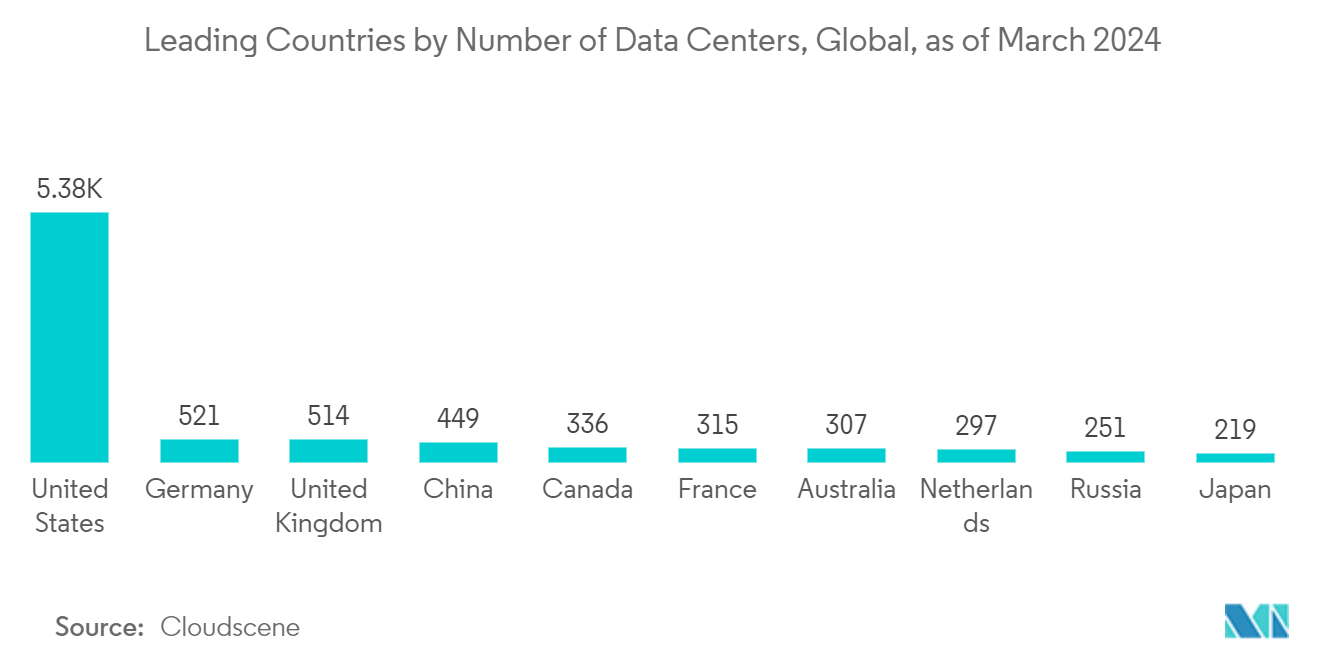
Asia-Pacific Region is Expected to Witness Robust Growth
- China is anticipated to remain the region's most significant electric service market, with substantial investments in coal and renewable energy sources, including solar and wind. The government's commitment to decreasing carbon emissions and transitioning to cleaner energy forms has led to a surge in renewable energy projects. China's goals for carbon neutrality by 2060 are reshaping the market landscape and drawing investments and partnerships.
- According to the China Electricity Council (CEC), as of 2023, nearly 2,920 gigawatts of electricity generation capacity was installed in China. This was an increase from approximately 3,000 gigawatts in 2022. Most thermal power is coal-based and is the energy source with the country's most significant power generation capacity. Moreover, according to CEC, China had a total electricity consumption of around 9,220 terawatt hours in 2023. This was a notable increase compared to 2022, when consumption amounted to approximately 8,640 terawatt hours. This increase in electricity consumption will drive the country's market growth.
- India is one of the most dynamic markets for testing and inspection in the Asia-Pacific region, as it is one of the fastest emerging economies in the region. According to the Central Electricity Authority (CEA), India's highest energy capacity came from thermal energy, amounting to an installed capacity of over 236 thousand megawatts as of February 2023. Approximately 70% of the country's electricity generation was from thermal power plants. Coal dominated power supply, with 86% of the contribution coming from thermal power plants. Along with coal, thermal power is generated from lignite, diesel, and gas.
- In February 2024, the government of India announced it is actively expanding renewable energy capacity to reduce reliance on fossil fuels. It aims to meet 50% of electricity needs from renewable sources by 2030. Plans include increasing nuclear power capacity to achieve net-zero emissions by 2070. These energy and power sector developments will drive the market studied.
- Furthermore, according to the International Renewable Energy Agency (IRENA), the total capacity of renewable energy in the South Asian country of India was around 176 gigawatts in 2023. India's increasing renewable energy capacity is likely to offer opportunities for the growth of the studied market.
- India is also witnessing several investments in data centers. For instance, in November 2023, Adani Enterprises Ltd, the flagship of billionaire Gautam Adani, announced that it would spend around USD 1.5 billion on its data center business in the next three years. The company plans to build nine data centers and target a total capacity of 1 gigawatt by 2030. This would provide infrastructure for the booming demand for digital services in the nation of 1.4 billion people, who are already luring the most significant global firms, such as Amazon.com Inc. and Google. The increase in data center infrastructure is likely to boost the growth of the market studied.
- Electric vehicles (EVs) are also influencing the market, creating new demand for charging infrastructure and prompting electric service companies to adapt their offerings. Japan's automotive sector is undergoing a significant shift. Driven by Japan's ambitious targets of achieving net-zero emissions by 2050 and a 46% reduction by 2030, electric vehicles (EVs) are gaining traction. In line with this, the national government has outlined clear targets: aiming for EVs and plug-in hybrid electric vehicles (PHEVs) to constitute 20-30% of passenger car sales by 2030, with fuel cell vehicles (FCVs) targeted at 3%.
- Further emphasizing this shift, Japan's Ministry of Economy, Trade, and Industry (METI) has set an even more ambitious goal under the Green Growth Strategy: achieving a 100% sales share for EVs by 2035. Notably, hybrid electric vehicles (HEVs) are already a significant player, accounting for nearly 30% of total vehicle sales in Japan.
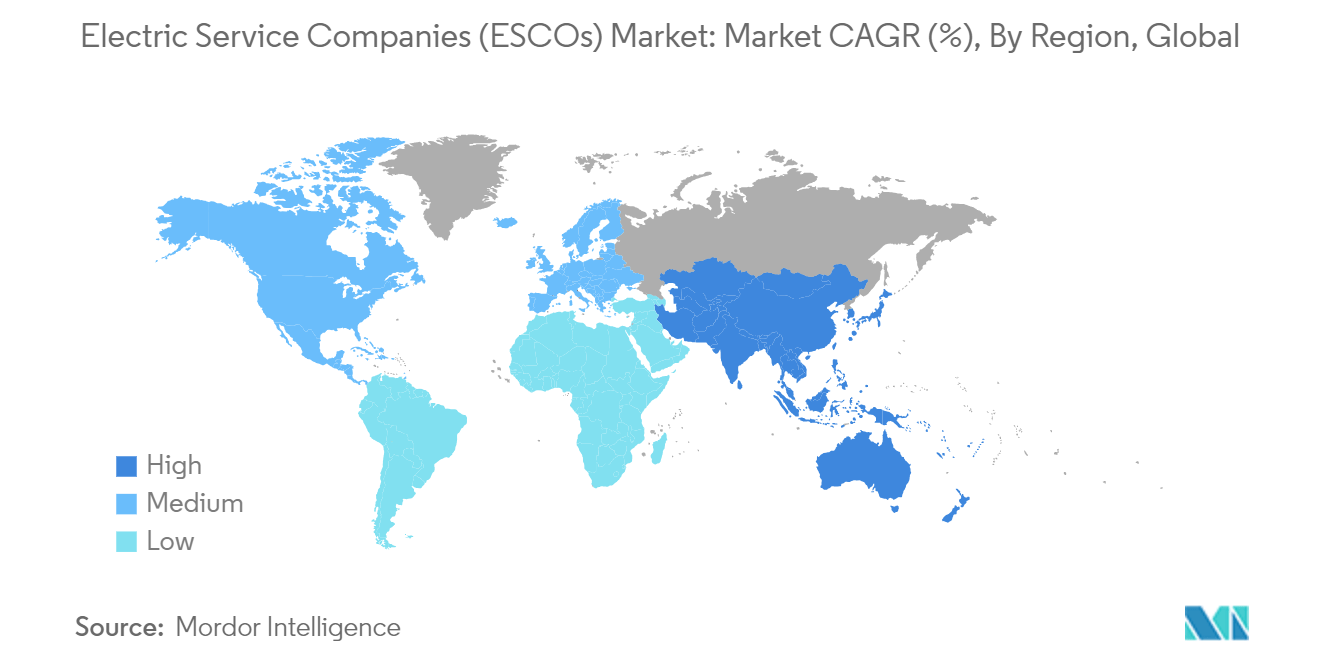
Electric Service Companies (ESCOs) Industry Overview
The Electric Service Companies (ESCOs) market is fragmented, with several major players, such as Eaton Corporation PLC, General Electric Company, Honeywell International Inc., Schneider Electric SE, etc. These market players strive to innovate new products through extensive investments in R&D, collaborations, and mergers to cater to consumers' evolving demands.
- In August 2024, Thailand's Ministry of Energy, through its Department of Alternative Energy Development and Efficiency (DEDE), unveiled an energy-saving initiative aimed at public sector agencies. The program is expected to see collaboration between the Metropolitan Electricity Authority (MEA), the Provincial Electricity Authority (PEA), and newly formed private energy service companies (ESCOs) to deliver energy-saving solutions to government entities.
- In March 2024, Schneider Electric, a digital transformation of energy management and automation provider, announced its plans to invest INR 3,200 crore (USD 381.19 million) in expanding its industrial footprint in India by 2026. These investments are spread over Gujarat, Telangana, Karnataka, West Bengal, Odisha, Tamil Nadu, Maharashtra, Himachal Pradesh and Uttarakhand.
Electric Service Companies (ESCOs) Market Leaders
-
Eaton Corporation plc
-
Honeywell International Inc.
-
Schneider Electric SE
-
Johnson Controls International plc
-
General Electric Company
*Disclaimer: Major Players sorted in no particular order
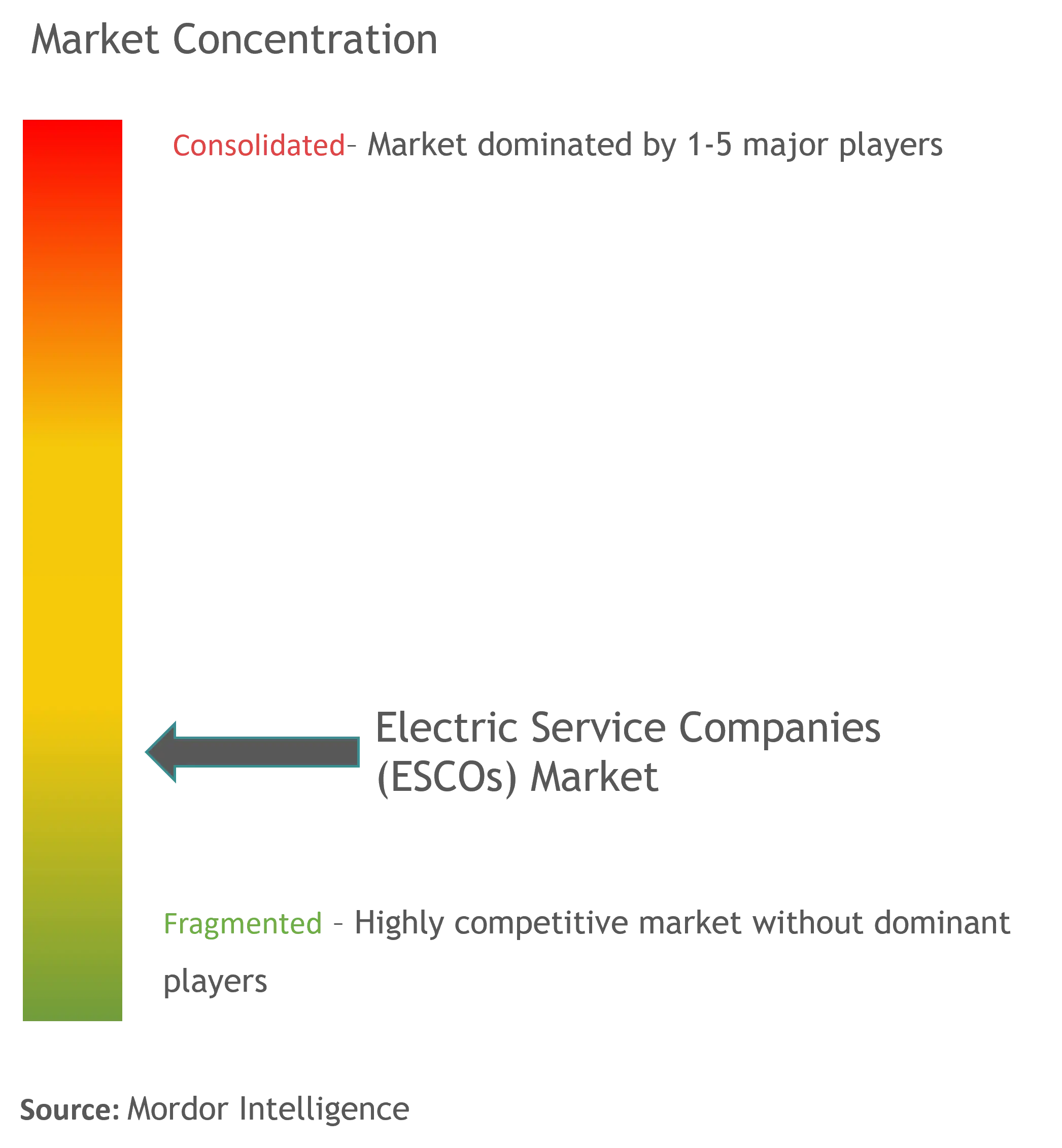
Electric Service Companies (ESCOs) Market News
- July 2024 - Honeywell and Air Products jointly announced that Honeywell agreed to acquire Air Products' Liquefied natural gas process technology and equipment business for USD 1.81 billion in an all-cash transaction. As a result of the acquisition, Honeywell is anticipated to offer customers a comprehensive, top-tier solution for managing their energy transformation journey. The new holistic offering will encompass natural gas pre-treatment and advanced liquefaction, utilizing digital automation technologies unified under the Honeywell Forge and Experion platforms.
- May 2024 - Honeywell announced its partnership with Enel North America to enhance building automation and demand response solutions for commercial and industrial organizations. Automation can control and regulate energy loads to help stabilize the power grid. Enel North America and Honeywell empower organizations to effortlessly incorporate demand response programs into their operations while enhancing operational efficiency. With Enel's extensive energy portfolio at their disposal, customers can utilize automated demand response solutions, playing a pivotal role in averting blackouts and grid outages in their communities during peak usage times.
Electric Service Companies (ESCOs) Market Report - Table of Contents
1. INTRODUCTION
- 1.1 Study Assumptions and Market Definition
- 1.2 Scope of the Study
2. RESEARCH METHODOLOGY
3. EXECUTIVE SUMMARY
4. MARKET INSIGHTS
- 4.1 Market Overview
-
4.2 Industry Attractiveness - Porter's Five Forces Analysis
- 4.2.1 Bargaining Power of Suppliers
- 4.2.2 Bargaining Power of Buyers
- 4.2.3 Threat of New Entrants
- 4.2.4 Threat of Substitute Products
- 4.2.5 Intensity of Competitive Rivalry
- 4.3 Industry Value Chain Analysis
- 4.4 Impact of COVID-19 Aftereffects and Other Macroeconomic Factors on the Market
5. MARKET DYNAMICS
-
5.1 Market Drivers
- 5.1.1 Transition to Renewable Energy Sources
- 5.1.2 Technological Advancements like Electric Vehicles and Smart Grids
-
5.2 Market Restraint
- 5.2.1 High Initial Costs
6. MARKET SEGMENTATION
-
6.1 By Type
- 6.1.1 SMEs
- 6.1.2 Large Enterprises
-
6.2 By End-User
- 6.2.1 Commerical
- 6.2.2 Industrial
- 6.2.3 Residential
-
6.3 By Geography***
- 6.3.1 North America
- 6.3.2 Asia
- 6.3.3 Europe
- 6.3.4 Middle East and Africa
- 6.3.5 Latin America
- 6.3.6 Australia and New Zealand
7. COMPETITIVE LANDSCAPE
-
7.1 Company Profiles*
- 7.1.1 Alpiq Holding Ltd.
- 7.1.2 Center Line Electric Inc.
- 7.1.3 Eaton Corporation plc
- 7.1.4 Electric Services Inc.
- 7.1.5 Enel Spa
- 7.1.6 General Electric Company
- 7.1.7 Helix Electric
- 7.1.8 Honeywell International Inc.
- 7.1.9 Johnson Controls International plc
- 7.1.10 Nextera Energy Inc.
- 7.1.11 Schneider Electric SE
- 7.1.12 Veolia Environnement SA
- 7.1.13 Iberdrola SA
- 7.1.14 Siemens AG
8. INVESTMENT ANALYSIS
9. FUTURE OF THE MARKET
** Subject To AvailablityElectric Service Companies (ESCOs) Industry Segmentation
Electric Service Companies (ECSOs) specialize in delivering crucial operational, maintenance, and delivery services within the energy sector. ESCOs prioritize energy conservation by fine-tuning energy usage to align with an organization's consumption patterns. For market estimation, the revenue generated from sales of various electric services across a diverse range of geographic regions worldwide is tracked. Market trends are evaluated by analyzing product innovation, diversification, and expansion investments. Enhancements in energy efficiency, artificial intelligence, data centers, etc., are also crucial in determining the growth of the market studied.
The electric service companies (ESCOs) market is segmented by type (SMEs and large enterprises), end-user (commercial, industrial, and residential), and geography (North America, Asia-Pacific, Europe, Latin America, and Middle East and Africa). The market sizes and forecasts are provided in terms of value (USD) for all the above segments.
| By Type | SMEs |
| Large Enterprises | |
| By End-User | Commerical |
| Industrial | |
| Residential | |
| By Geography*** | North America |
| Asia | |
| Europe | |
| Middle East and Africa | |
| Latin America | |
| Australia and New Zealand |
Electric Service Companies (ESCOs) Market Research FAQs
How big is the Electric Service Companies Market?
The Electric Service Companies Market size is expected to reach USD 31.40 billion in 2024 and grow at a CAGR of 7.10% to reach USD 44.20 billion by 2029.
What is the current Electric Service Companies Market size?
In 2024, the Electric Service Companies Market size is expected to reach USD 31.40 billion.
Who are the key players in Electric Service Companies Market?
Eaton Corporation plc, Honeywell International Inc., Schneider Electric SE, Johnson Controls International plc and General Electric Company are the major companies operating in the Electric Service Companies Market.
Which is the fastest growing region in Electric Service Companies Market?
Asia Pacific is estimated to grow at the highest CAGR over the forecast period (2024-2029).
Which region has the biggest share in Electric Service Companies Market?
In 2024, the North America accounts for the largest market share in Electric Service Companies Market.
What years does this Electric Service Companies Market cover, and what was the market size in 2023?
In 2023, the Electric Service Companies Market size was estimated at USD 29.17 billion. The report covers the Electric Service Companies Market historical market size for years: 2019, 2020, 2021, 2022 and 2023. The report also forecasts the Electric Service Companies Market size for years: 2024, 2025, 2026, 2027, 2028 and 2029.
Electric Service Companies (ESCOs) Industry Report
Statistics for the 2024 Electric Service Companies (ESCOs) market share, size and revenue growth rate, created by Mordor Intelligence™ Industry Reports. Electric Service Companies (ESCOs) analysis includes a market forecast outlook for 2024 to 2029 and historical overview. Get a sample of this industry analysis as a free report PDF download.



